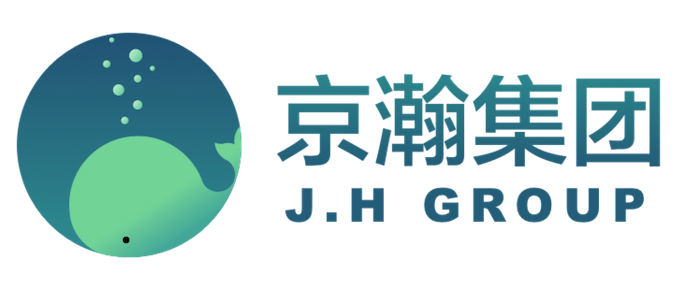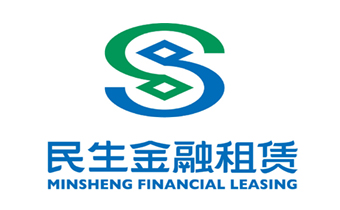中国船厂应更加注重效率和质量
2014年07月16日 13时 航运界
中国船厂应更加注重效率和质量
——航运界网专访DNV GL集团高级市场分析师薄查德(PIERRE POCHARD)
——航运界网专访DNV GL集团高级市场分析师薄查德(PIERRE POCHARD)
在经历过2012年全球造船市场最为困难的一年后,2013年开始,新造船价格开始回暖,订单数量逐步回升。包括中国船厂在内的世界各大船厂也纷纷转型、重组、并购,期冀以新面貌示人,从而取得长效发展,在竞争中立于不败之地。
DNV GL集团大中国区海事业务高级分析师薄查德(Pochard)先生常年从事新造船市场研究,为了解2014年全球新造船市场情况,航运界网对他进行了专访。

Ship.sh:Can you please introduce the newbuilding market so far in 2014 for us?
航运界:您能简单介绍一下截至目前的新造船市场情况吗?
Pochard:According to IHS Fairplay there were 715 contracts (26.9 mill. GT) signed in the 1st Q 2014.
The activity has been gradually slowing down over the past 3 months, with March being by far the
weakest month, with only 112 contracts placed.
In light of climbing newbuilding prices in combination with limited slots availability,
the slow-down comes as no surprise.
With respect to the ship types the strongest segments were still bulk carriers with
275 new contracts, followed by tankers (125), container ships (48) and gas carriers
with 37 contracts (LPG 32 and LNG 5).
We also experienced lower ordering in the offshore segment with 92 contracts;
however the mobile offshore units segment seemed to be less affected compared
to the OSV market.
Almost 44% of all contracts went to Chinese yards. Among them there were 150 bulkers,
24 containers, 18 PSVs and 11 Jack-ups.
Korea received 119 contracts (17%), with 47 tankers, 20 bulkers, 15 containers
(mostly within 14k TEU + segment) as well as staggering number of LPG carriers
(22 out of 32 total).
Japan was awarded with 23% of all new contracts (166), mostly bulkers (84),
MR and chemical tankers (29) and gas carriers (1 LNG and 5 LPG).
薄查德:根据IHS Fairplay数据,2014年一季度全球共有715份新造船订单(2690万GT)签署。然而,在过去的三个月,新订单的签订正逐渐放缓,三月份也成为迄今为止订单最少的月份,只有112份订单签订。鉴于攀升的新造船价格和有限的可用船台数量,此种放缓并不令人吃惊。
势头最强的依然是干散货船型,一季度共有275艘新订单;紧随其后的是油轮(125艘),集装箱(48艘)和气体运输船(37艘)—其中32艘LPG船(液化石油气船)和5艘LNG船(液化天然气船。在海工新订单领域,我们同样经历了订单减少(92艘);然而,相较离岸支持船(OSV)领域,移动海工装置受到的冲击较小。
全部新造船合同中的44%流向中国船厂,包括150艘散货船,24艘集装箱船,18艘PSV和11艘自升式钻井平台。韩国船厂获得了119艘新造船订单,占比17%。包括47艘油轮,20艘散货船,15艘集装箱船(大部分为14,000TEU的超大型集装箱船)和惊人的22艘液化石油气船(全球总数33艘)。日本船厂则获得了166艘新造船订单,占比23%。这批订单主要是84艘散货船,29艘MR型油轮化学品船,及6艘气体运输船。
Ship.sh:As you mentioned before, Chinese shipyards began to enter
the field of offshore from last year, do you think they ready yet?
航运界:许多中国船厂自去年起开始投入到海工领域,您认为中国船厂在这方面是否做好了充分准备?
Pochard:Building an offshore mobile unit is very much different from building
a traditional merchant ship. China’s offshore yards need to focus on production efficiency,
quality, and on time delivery to further improve their competence in offshore. But in general
China is taking a growing share of the mobile offshore units (mainly jackups so far) and
is eager to build up stronger competence in the offshore segment in order to compete
against South Korean yards.
薄查德:建造海工产品与建造普通商船有很大不同。中国的海工船厂应更加注重生产效率、质量和按时交付,以提高其在海工领域的竞争力。
总的来说,中国正获得更多的移动海工装置(目前以自升式钻井平台为主)建造份额,并渴望在海工领域建立更强大的能力以便与韩国船厂竞争。
Ship.sh:Nowadays, as we all know that Japan, South Korea and china are the
top three world's shipbuilding country. So, which one you are more optimistic, why?
航运界:如今,中日韩三国已稳坐世界造船的前三把交椅,那么您如何看待这个国家的造船业?
Pochard:Since the contracting downturn many of the small Chinese yards which opened
between 2005 and 2010, focusing almost exclusively on bulk carriers, have struggled to fill
their orderbook. Some big state-owned yards and private yards have, on the other hand, been very successful in securing orders.
There is a big diversity among Chinese yards and in the longer term it is more likely that the state-yards and top 10 local yards will be first to react due to their relative maturity and ability
to be more competitive in a greater variety of vessel sectors.
The shipbuilding industry in South Korea is very mature and most of the yards have been
able to manage the turning point in the shipbuilding cycle.
The largest shipyards in South Korea have also increasingly focused on the offshore
sector to counter-balance the decline of orders in the merchant sectors. Therefore there
should be limited downward adjustments to South Korean capacity in the short term.
Japanese yards did not expand capacity to such a degree as their Chinese and South Korean
competitors during the contracting boom. Japanese yards have also been very good at marketing “eco-design” and used their experience and technical reputation to help securing orders for complex ship types.
薄查德:自从(全球新造船)订单量开始下滑,许多2005-2008年期间开业的,几乎只建造散货船型的中国小型船厂,一直不断挣扎以获得新订单。另一方面,一些大型的国有船厂和民营船厂则成功的争取到了订单。中国船厂间的差异性很大,从长远来看,国有船厂和排名前十的船厂因其发展相对成熟以及具备的能力,更有可能率先反应,在更多船型领域更加具有竞争力。
韩国的造船业十分成熟,大多数韩国船厂已经有能力应对造船业的周期。韩国大型船厂也同样正在增加对海工领域的关注,以平衡传统商船建造领域订单的下降。因此,短期内韩国造船产能的下降是有限的。
在造船业繁荣时期,日本船厂的产能并未扩大到中韩两国竞争对手如此的程度。日本船厂善于营销“生态设计”,用他们的经验和技术信誉,获得复杂船型订单。
关于薄查德先生
薄查德获法国大学Paris 4 “La Sorbonne” 应用数学、统计和计算机科学专业的硕士学位。他于2007年加入DNV GL 挪威总部,参与了很多市场进入研究、和对于主要船厂和船东的市场分析。
自2008年起他晋升为高级市场分析师,他的主要职责包括收集有关航运和海工市场的相关数据和信息、进行分析并撰写报告。
他于2012年被派遣至上海,以支持DNV GL亚太地区的发展。他的主要研究领域是造船市场。
Pierre Pochard received his MSc degree in Applied Mathematics, Statistics and Computer
Sciences from the French University of Paris 4 “La Sorbonne”.
In 2007, he joined DNV GL in Oslo (Norway) and has been involved in numerous market
entry studies, market analysis for major yards and ship owners.
Since 2008 he works as a Senior Market Analyst. His responsibilities include collection,
analysis and reporting of data relating to the shipping and offshore markets and
providing analytical expertise within DNV GL.
Pierre Pochard moved in Shanghai in 2012, to support the DNV GL region “Asia Pacific”
and his main area of research is the shipbuilding market.
航运界网版权所有,转载请注明出处











